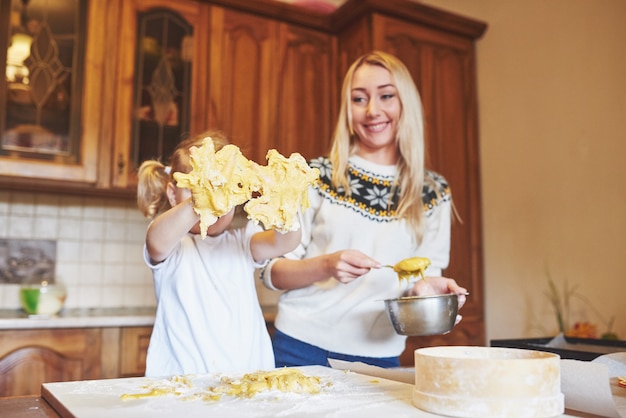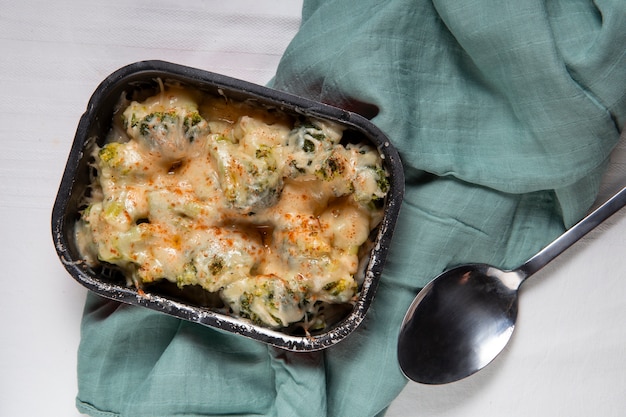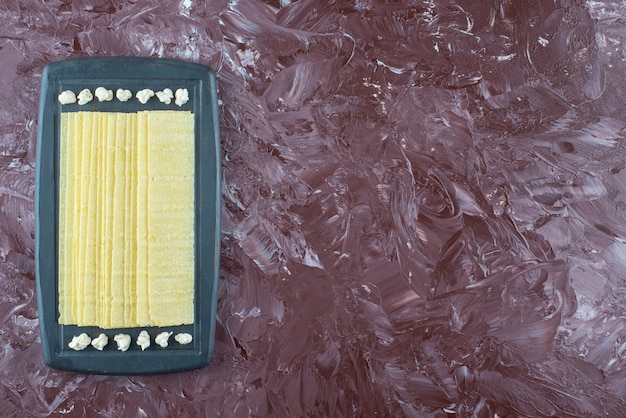(Part 1) Unveiling the Layers of Lasagna

The Foundations of Flavour
- The Noodles: The backbone of our lasagna, the noodles provide the structure and absorb the delicious sauce. You have a choice between traditional pasta sheets, which require a longer bake to soften, and no-boil lasagna noodles, a convenient shortcut for busy cooks.
- The Sauce: The heart and soul of the dish, a rich, hearty tomato sauce is the classic choice. However, you can embrace creativity and experiment with other flavour profiles, such as creamy béchamel, vibrant pesto, or even a meaty ragu.
- The Cheese: This is where the magic happens! A blend of mozzarella, ricotta, and parmesan adds creamy textures, tangy flavours, and a beautiful golden brown crust to the finished product.
- The Fillings: Here's where you can truly let your culinary imagination soar! Whether you prefer a hearty meat filling like ground beef, sausage, or chicken, or a vegetarian approach with spinach, mushrooms, or roasted vegetables, the possibilities are endless.
(Part 2) Mastering the Art of Timing

The Variables That Shape the Bake
A multitude of factors come into play when determining the optimal baking time for your lasagna:
- Noodle Type: Traditional pasta sheets require more time to cook through, while no-boil noodles need less time due to their pre-cooked nature.
- Baking Dish Size: Larger dishes require longer baking times to ensure even cooking, while smaller, shallow dishes bake more quickly.
- Oven Temperature: A hotter oven will cook your lasagna faster, but requires vigilant monitoring to prevent burning.
- Number of Layers: The more layers you have, the longer it will take for the heat to penetrate and cook everything evenly.
(Part 3) Decoding Oven Temperatures

My Oven Adventures: A Cautionary Tale
I've learned the hard way that ovens, even the most well-intentioned ones, can be fickle creatures. My own oven, a temperamental old thing, has taught me the importance of close monitoring and a good oven thermometer. I've had a few disastrous experiences where the cheese turned into a crispy mess before the noodles were even cooked through!
Tips for a Perfectly Heated Oven
- Preheating is Key: Always preheat your oven to the correct temperature before placing your lasagna inside. This ensures even heat distribution from the start.
- Choose the Right Size Baking Dish: Overcrowding your baking dish can hinder even heat circulation.
- Constant Vigilance: Don't be afraid to peek into the oven and check on your lasagna periodically. If the cheese is browning too quickly, cover the dish with foil to prevent burning.
(Part 4) The Power of Resting: A Lasagna Secret
While the initial bake is crucial, the resting period is often overlooked. This is the time when flavours truly meld and the magic of lasagna unfolds.Why Resting Makes a Difference
- Flavour Fusion: As the lasagna rests, the sauce, cheese, and noodles have the opportunity to mingle, creating a symphony of deliciousness that only improves with time.
- Noodle Perfection: The residual heat from the baking process continues to cook the noodles through, ensuring a tender, satisfying texture.
- Effortless Cutting: A well-rested lasagna will slice cleanly, resulting in neat portions and a more enjoyable presentation.
Resting Recommendations
While there are no hard and fast rules, I recommend resting your lasagna for at least 30 minutes before serving. However, if you can resist the temptation, a longer rest, even overnight, is always preferable. I've found that making lasagna the night before and allowing it to rest in the refrigerator overnight results in a truly exceptional dish!(Part 5) Deciphering the Signs of a Perfectly Baked Lasagna
You can't judge a book by its cover, and you can't judge a lasagna by its appearance alone! A little detective work is needed to truly know if your lasagna is cooked to perfection.Visual Cues to a Well-Baked Dish
- Bubbly, Golden Brown Cheese: The classic sign of a perfectly baked lasagna! This indicates that the cheese has melted beautifully and developed a delicious, crispy crust.
- Tender, Translucent Noodles: They should be soft and cooked through, with a slight translucence that shows they have absorbed the sauce fully.
- Bubbling, Thickened Sauce: A good lasagna sauce will be thick and rich, coating the noodles and cheese beautifully, not watery or runny.
The Temperature Test: A Definitive Answer
For those who need a more definitive answer, I recommend using a thermometer. Insert it into the center of the lasagna, and it should read at least 165°F (74°C). This ensures that the noodles and any meat filling are cooked through.(Part 6) The Lasagna Timeline: A Guide to Baking Time
Now, let's delve into the specifics of lasagna cooking times, based on my experience and countless delicious experiments.Lasagna Cooking Times by Type
| Type of Lasagna | Cooking Time | Rest Time |
|---|---|---|
| Traditional Lasagna (Pasta Sheets) | 30-45 minutes | 30-60 minutes |
| No-Boil Lasagna | 25-35 minutes | 30-60 minutes |
| Small Baking Dish (less than 9x13 inches) | 20-30 minutes | 30-60 minutes |
| Large Baking Dish (13x9 inches or larger) | 35-45 minutes | 30-60 minutes |
A Word of Caution: Trust Your Senses
Remember, these are just guidelines. Your specific oven, the type of lasagna you're making, and your personal preferences all play a role in the perfect cooking time. Always check your lasagna regularly to ensure it's cooked to your liking.(Part 7) Navigating Common Lasagna Mishaps
Even the most experienced cooks have their lasagna disasters. From soggy noodles to burnt cheese, these culinary blunders can be frustrating. But don't despair! With a little knowledge and some strategic solutions, you can avoid these common pitfalls.Lasagna Problems and Their Solutions
- Soggy Noodles: This occurs when the lasagna doesn't bake long enough or when there's excessive moisture from the sauce. Solution: Thicken your sauce before layering it and bake your lasagna a little longer.
- Burnt Cheese: Ah, the dreaded crispy cheese! This happens when your oven is too hot, or you're not watching your lasagna closely. Solution: Monitor your lasagna closely and cover it with foil if the cheese starts to brown too quickly.
- Runny Sauce: A sauce that's too thin can make your lasagna soggy and messy. Solution: Thicken your sauce with a little cornstarch or flour before layering it.
- Overcooked Noodles: You can't undo overcooked noodles, but you can prevent them! Make sure your sauce is cooked through before you assemble your lasagna, and don't overcook the noodles.
(Part 8) The Art of Leftovers: Lasagna's Second Act
Let's be honest, no matter how much you try to resist, lasagna leftovers are practically inevitable. And that's a good thing! Lasagna is even more delicious the next day, with the flavors fully melded and ready for a quick and satisfying meal.Storing and Reheating Leftover Lasagna
- Proper Storage: Let your lasagna cool completely before storing it in an airtight container in the fridge. This prevents sogginess and ensures freshness.
- Reheating Options: You can reheat your lasagna in the oven for a crispy cheese finish, in the microwave for quick convenience, or even in a skillet on the stovetop for a rustic touch.
FAQs: Your Lasagna Questions Answered
I've covered a lot of ground about lasagna today, but I know you still have more questions. Here are some common queries that I frequently encounter:1. Can I Freeze Lasagna?
Absolutely! Freezing lasagna is a great way to have a delicious meal ready to go whenever you need it. Just make sure to let the lasagna cool completely before freezing it in an airtight container. To reheat, thaw it overnight in the fridge, then bake it in the oven until heated through.
2. What's the Best Way to Cut Lasagna?
A sharp knife is essential! And don't be afraid to use a little force. If you've rested your lasagna properly, it should cut cleanly. I prefer a serrated knife, but a good chef's knife will also work well.
3. How do I Prevent My Lasagna from Sticking to the Baking Dish?
You can either grease the baking dish with butter or oil, or line it with parchment paper. This will ensure that your lasagna comes out of the dish cleanly and without any sticking.
4. Can I Make Lasagna Ahead of Time?
Absolutely! You can assemble your lasagna up to a day ahead of time and store it in the fridge until you're ready to bake it. Just make sure to cover it tightly with plastic wrap or aluminum foil. This will allow the flavors to develop and make your lasagna even more delicious.
5. What are Some Creative lasagna variations?
The beauty of lasagna is its versatility. Experiment with different sauces, cheeses, and fillings to create your own unique masterpiece. Some of my favorite variations include spinach and ricotta lasagna, chicken and mushroom lasagna, and even vegetarian lasagna with roasted vegetables. Don't be afraid to get creative!
So, there you have it! Armed with this knowledge, you're well on your way to creating a lasagna that will leave everyone begging for seconds. Remember, the key is to embrace the process, experiment with flavours, and most importantly, have fun! Happy baking!
Everyone is watching

Corn on the Cob: The Ultimate Guide to Perfectly Cooked Ears
Healthy MealsAh, corn on the cob. Just the name evokes images of sunny days, barbecues, and that sweet, juicy flavour that ...

Perfect Pork Roast Oven Cooking Time: A Guide to Delicious Results
Healthy MealsThere's something truly satisfying about a perfectly roasted pork. The aroma alone is enough to make your mout...

Ham Cooking Time: How Long to Bake, Smoke, or Boil a Delicious Ham
Healthy MealsAh, ham. It's a classic, isn't it? A real crowd-pleaser, especially around holidays. And when done right, it'...

Scallops: The Ultimate Guide to Perfect Cooking
Healthy MealsAh, scallops. Those delicate, sweet, and utterly delicious morsels of the sea. They hold a special place in my...

Spaghetti Squash: The Ultimate Guide to Cooking and Serving
Healthy MealsRemember that time you saw spaghetti squash at the supermarket, looking all bumpy and strange, and thought, "W...
